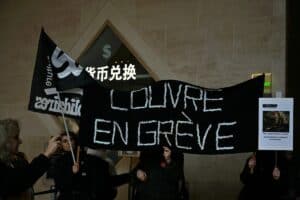Ruga’s new artwork explores the complex relationships between settlers and natives, colonisers and the colonised...

Renowned artist Athi-Patra Ruga is gearing up to unveil his solo exhibition, Amadoda on the Verge…[1835-2025].
The grand opening will be held at BKhz Gallery in Rosebank, Johannesburg, on Saturday, 31 August.
Ruga’s new artwork explores the complex relationships between settlers and natives, colonisers and the colonised, as depicted through the clothing of his painted figures.
He uses oil paint on canvas to connect with traditional painting techniques while offering a fresh perspective on colonial history.
His work questions stereotypes from the past and provides a new view of how colonialism affects modern black masculinity.
Ruga’s art employs detailed costumes and historical references to address the effects of colonial history and present a more human-centred view.
Challenging colonial narratives through art
We caught up with Ruga to discuss the inspiration behind his exhibition, the role of art in challenging historical narratives, and his commitment to mentoring emerging artists.
ALSO READ: Rasta teams up with young artists to honour Connie Chiume and Zanele Mbokazi
Tell us about the inspiration behind your upcoming solo exhibition, Amadoda on the Verge…[1835-2025]. What what you hope audiences will take from it?
This solo exhibition resulted from my move back to my native Eastern Cape and seeing the gaps and omissions in how we explain contemporary masculinities. Mythmaking fills these gaps as I use avatars to introduce you to a historical and imagined Eastern Cape Frontier of 1835. This concept of The Frontier is crucial to the story, as it reflects men, both past and present, being on the verge of something new in how they define themselves. In the paintings, you’ll see a mix of vernacular, traditional, and researched styles of 19th-century men’s dress that have influenced us today.
What role do you believe art plays in reinterpreting and challenging traditional historical narratives, particularly those surrounding colonialism?
As African artists, we have the important duty to redress the wrongs of the past. For me, this means remembering and lionising those lost among the stale narratives of queer, black, and femme histories. With Amadoda on the Verge…, we studied the image of the black masculine in the eyes of the colonists and the realisations shatter the idea around “the brute” or “the docile noble savage”, as the effects of this stereotype have also been embodied by those it was meant to destabilise- black men. Paintings were a way that was used to legitimise this and that is a medium I also appropriate to retell better stories.
Mentorship and the future of art in South Africa
How do you ensure that the voices and perspectives of black artists are represented and celebrated in the contemporary art scene, both in South Africa and globally?
I live in the abundance of a rich lineage of painters, particularly the South African heritage. Artists who have had a lasting impact share one common trait: they invested in their communities’ artistic output. I benefitted from that privilege and, in return, I create and mentor communities around me. In 2017, I started a bursary prize for my former art school, Belgravia Arts, in East London. In 2020, we formed BODYLAND, a mentorship incubator based in Hogsback, Eastern Cape, where our studio is located. This also extends globally as I give lectures, with recent ones at Yale School of the Arts and Northwestern University.
What advice would you give to emerging artists about sustaining black excellence in the arts?
I’m ambivalent about the term “black excellence” as I wonder who it might exclude. Personally, I strive for virtuosity in form and medium and demand the same from my community. I am also intrigued by “black majesty” as it doesn’t seek entry to established tables or “masters’ tools”. Instead, it demands that we establish our own community standards.
ALSO READ: Not sure how to commemorate World Folklore Day? The Folklore Festival could be a good start
Ruga on the past and the future
Can you share any experiences or challenges you’ve faced in your journey as a black artist in South Africa, and how these have influenced your commitment to mentoring the next generation?
Thirty years since the founding of this nation, the challenge has always been attracting black patronage to fund and support the visionaries already present in the scene.
Looking ahead, how do you envision the future of art in South Africa, and what steps do you believe are necessary to achieve sustainability and growth in this field?
It starts with parents creating spaces for our boys and girls to envision and dream of new worlds. Our academies need to be more open to new ideas around black imagination. Every artist must not be afraid to learn and teach.
NOW READ: Silwerskermfees: ‘n Moslem-begrafnis (janazah) met ‘n lag by die traan






